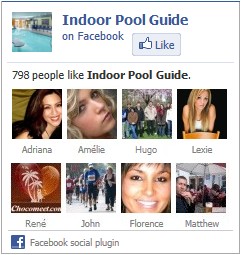
Overview
Ozone water treatment systems are different from the other methods discussed because they purify the pool water as it passes through the plant room. Both deal with water contaminants without providing a disinfectant residual, and allow the water in the pool itself to operate with a lower level of conventional residual disinfectant than it otherwise would.
Both ozone and ultraviolet radiation are potentially hazardous and attention should be paid to the safety of plant room operators, particularly during maintenance. Ozone plant rooms should be ventilated to Occupational Health and Safety Regulations.
Of the two, ozone is the more established in Australian pools. Ultraviolet radiation is beginning to be explored in commercial pools.
Ozone
Until recently, the prime objective of chemical treatment of a pool was to create a body of water that was clean and healthy in which one could swim with safety. An additional concern of pool operators and health authorities was to have a water and pool hall environment that looks appealing to the pool customer.
With the increasing demand for improved water quality, ozone is now being used with a measure of success and is being more widely used in public pools. Its use results in vastly improved water quality, both from health and aesthetic aspects where water quality problems exist.
Chemistry
Ozone is a bluish/purple gas. Chemically, it is three oxygen atoms (O3), as opposed to two in the oxygen molecule (O2). It can appear naturally around electrical equipment, for example, photocopiers, but for pool water disinfection it is generated on-site.
Ozone is produced in a generator when high voltage electricity is passed across a discharge gap. When dried air containing oxygen passes through this gap, the oxygen molecule is activated ‘up to’ an ozone molecule. Only a small percentage of the oxygen in air is converted to ozone.
As ozone is relatively unstable, it cannot be manufactured somewhere else and transported to the pool in cylinders like chlorine. As it is unstable, ozone is an extremely strong oxidant, and therefore a good disinfectant. As it decomposes into oxygen, no new chemicals are added to the water. However, it is also toxic in significant atmospheric concentrations, so excess (unreacted) ozone must be removed within the treatment system.
Dealing with Contaminants
The chemistry of the relationship between ozone and pool contaminants is complex. Ozone interferes with the reactions that produce contaminants, moreso than actually destroying urea, amino acids or trihalomethanes. And there are also significant reactions that allow subsequent filtration of the organic molecules by a process of microfloccuation. A slow reaction with chloramine to form chloride and nitrate also occurs, thus enhancing breakpoint chlorination and the removal of ammonia. The filters—especially granular activated carbon (GAC)—that remove ozone from the water before it returns to the pool, also remove some contaminants (activated carbon filters will also remove chlorine). The effect of ozonation and GAC filtration is to remove most of the chloramine, so the purity of the water is enhanced before it re-enters the pool.
As a result, the low dose of chlorine added to the water after filtration is completely available as a free chlorine residual for the pool. Well-managed ozone pools are generally odour free.
Plant Safety
Ozone in concentration is a dangerous gas and leakage into the plant room presents a serious occupational health risk. Ozone has a distinctive smell, however, an ozone leakage detector should be installed within the plant room. Ozone carrier pipes need to be fully sealed and pressure tested periodically to ensure that the installation can withstand the pressures involved. Where air containing ozone is bled off the top of filters (degassing), the air should be passed through a carbon destructor to destroy ozone gas prior to discharge outside the plant room.
Bacterial Colonisation
Chlorine is removed with the ozone. If it is totally removed, there may be bacterial colonisation of the filter. Therefore it is important to maintain some degree of residual disinfection throughout de-ozonation. Bed depth and filter velocity appears to be critical here. Recent experience has indicated that colonisation is likely in the de-ozonation media (particularly GAC) if the bed depth exceeds the levels recommended above, or if the velocity through the media is too low.
Residual Dosing
After ozonation and de-ozonation, the water should be essentially free from bacteria, and the majority of the organic matter oxidised. It does not, however, contain enough residual disinfectant to prevent cross-infection within the pool itself. A disinfectant residual must therefore be provided, normally sodium hypochlorite.
pH Value
In all cases the pH value should be maintained within the Regulations. The agent for pH control should be selected according to the nature of the fresh water supply and disinfection type.

